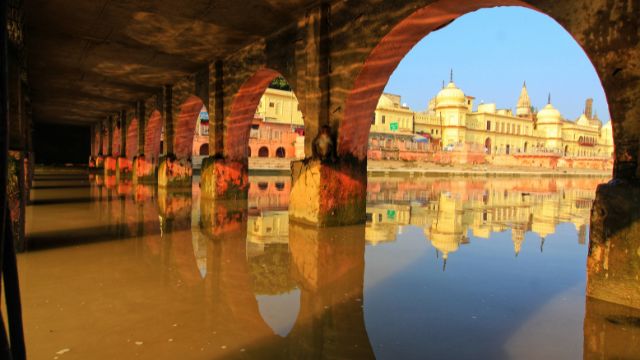The climate in Ayodhya is mild and pleasant throughout the entirety of each and every year. During the height of the summer and winter seasons, there are sporadic instances of both heat waves and chilly breezes. Ayodhya is one of the best places to celebrate Diwali in India.
However, if you want to experience the most of both the weather and the celebrations, you should go between the months of October to March.

The months of October through March are considered to be winter in Ayodhya. The temperature is anywhere from 5 degrees Celsius - 27 degrees Celsius at any given time. This is the most favorable time of year to make the trip to the location.
The winter season in the gangetic plains, where Ayodhya is also located, begins in October and continues until March. During this time, various holidays are observed, including Dussehra, Holi, Deepawali, etc., and the weather is usually pleasant.
The months of July through September are monsoon months. Temperatures might fluctuate anywhere from 24 degrees C - 32 degrees Celsius during this time of year. It is best to avoid making a trip to Ayodhya during the rainy season because the severe rains have the potential to make it difficult to enjoy the views.
The monsoon season is called "Chaturmaas" in religious texts because it was traditionally a time when holy men and women stayed put rather than travel. It rains constantly on the gangetic plain during the monsoon in India, and all of the major rivers experience flooding. The weather is still bearable, but the rain prevents any serious sight-seeing during the wet season. The months of July to September are known as monsoon season.
In Ayodhya, the warmest months are April, May, and June. Consistent temperatures of 28- 45 degree C are experienced.
Temperatures here can reach 48 degrees Celsius during the months of April, May, and June, when summer officially begins. Despite the persistent heat and 'loo,' devotees and pilgrims keep making the journey to have a glimpse of Lord Ram and offer their prayers.
The longer summer days allow for more sightseeing and travel than their shorter winter counterparts. Throughout, hotels and resorts typically offer their lowest rates throughout the summer. Therefore, the summer is the best time for a tourist on a tight budget to see the site where Lord Ram was born.